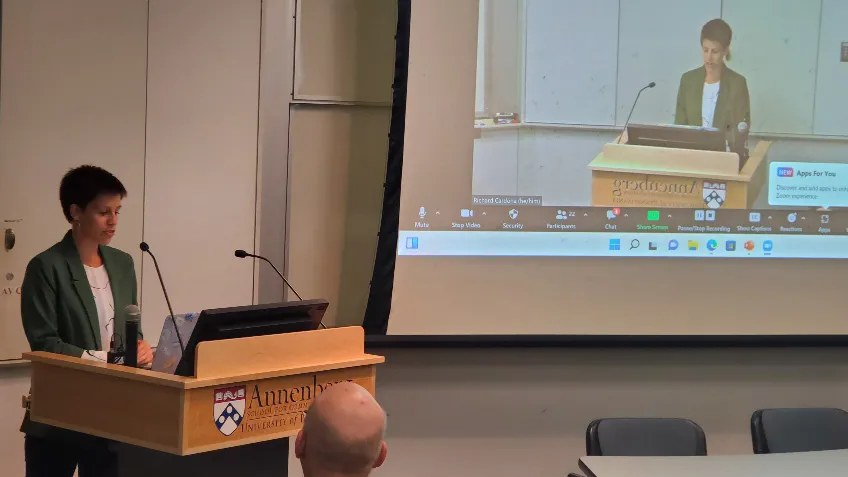Joe Gutierrez | Office of Strategic Communication | (909) 537-3007 | joeg@csusb.edu

A 3D virtual reality environment capturing various pieces of everyday life in Gaza such as bright orange sunsets, a group of friends enjoying the beach and a stand selling delicious snacks by the seaside was used to demonstrate the potential of immersive media for reimagining public spaces.
The VR environment was introduced as part of the event, titled “Yesterday's Future: The Centuries-Long Quest For Virtual Reality,” hosted by the Annenberg Virtual Reality ColLABorative, and recreated by the Cal State San Bernardino Extended Reality for Learning (xREAL) Lab with Information Technology Services (ITS) using the VR platform Mozilla Hubs.
In the VR environment, guests were able to “step into” these moments by walking into the spheres located throughout the environment and immerse themselves in the beauty rarely experienced by those outside of Gaza. In addition to providing an option for guests to join and virtually interact with another using their phones, computers, or with a VR headset.
The environment featured various 360-degree pictures and videos that are part of a project currently being developed by a CSUSB alumnus. The project, now known as “The Phoenix of Gaza XR: An Immersive Media Demo,” offers an immersive journalism alternative to mainstream media representations that focus on militarization.
The project first began during the alumnus' time in the Communications Studies MA program at CSUSB. He won one of the Graduate Extended Reality Research Scholarships from the xREAL Lab.
The event, according to the Annenberg website, “brought into conversation experts John Pavlik, Rita Lauria and Brad Hafford to discuss and historicize the intellectual and technological foundations of our decades-long virtual reality (VR) mission. The presenters offered an array of historical examples, including the séances of the Spiritualist movement, the intellectual roots of virtuality, and the ancient roots of immersive storytelling to tease out the fundamental concepts driving our persistent quest to experience modified realities. In turn, this talk lays the foundations for a more critical and nuanced understanding of today’s VR developments and the hype surrounding them.”
About the Annenberg Virtual Reality ColLABorative: The Annenberg Virtual Reality ColLABorative supports critical, intellectual, and technical exploration of virtual reality technologies in society. For more information about the event, workshop, or the Annenberg Virtual Reality Collaborative hosting this event please email: VR@asc.upenn.edu.
About xREAL: Extended Reality for Learning (xREAL) Lab with Information Technology Services (ITS) at CSUSB is an interdisciplinary technology innovation hub that brings together faculty, students, and staff to imagine and design immersive learning experiences with 3D modeling and printing, augmented reality, mixed reality, virtual reality, motion caption, and machine learning technologies. Each year, xREAL works with faculty fellows and undergraduate and graduate students across disciplines to provide a vision for future teaching and learning, mentorship and hands-on experience for the students, and sustainable innovation for the larger campus community. xREAL work is made possible thanks to generous support from President Tomás D. Morales and Vice President for Information for Technology Services Sam Sudhakar.